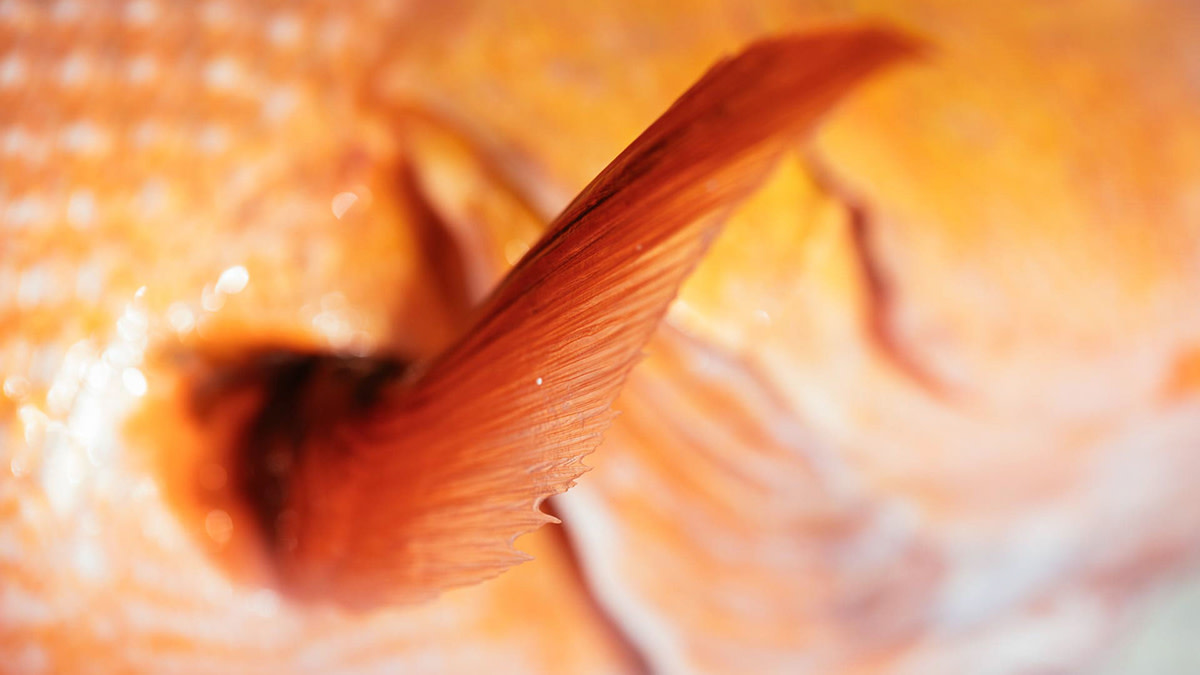
In this final installment of “Nostril to Caudal,” I’m tackling the exterior of a fish—specifically the skin, fins, scales, and slime. Unlike offal, most people aren’t grossed out by the thought of eating animal skin. Pork cracklins and crispy fried chicken are delicacies in many countries, and fish skin is devoured around the world. When I was a little girl, we fought over the caramelized edges of butter-soaked, fried trout skin. But the skin is only one part of a fish’s exterior. They also have scales, fins, and slime, which are less known for their culinary appeal. A little creativity, however, has added them to the menu. Here are some ways to put fish skin, fins, scales, and yes, even the slime to use.
Skin
Fish skin is best served crispy. It can be left on the filet or eaten on its own like crackling. It’s also a great substitute for chips or even taco shells. Crisping the skin in a pan with oil or butter works well, but it’s unlikely to become truly crispy unless all the moisture is removed first. You can do this by scaling a piece of fresh fish skin and then dipping it into boiling water for three seconds. From there, dry it in a dehydrator or oven set on low heat. When the skin is completely dry, deep-fry it in hot oil until it rehydrates up to three times its original size.
Scales
Fish scales can be removed in one of two ways. You can scrape them off with a scaling tool or a blunt knife edge, or slice them off in strips along with the membrane affixed to the skin. This should be done with care so as not to puncture the skin. Sydney chef Josh Niland, author of “The Whole Fish Cookbook,” says that the membrane is what gives the fish’s skin its colour. If you’re looking to maintain the natural colour on the fish itself, leave the membrane on, but fillets typically taste better with it removed—leaving you with all those scales.
Josh uses fish scales in his restaurant by blanching them three times in water or stock. He then flavours them to be either sweet or salty and sprinkles them over desserts and other dishes. I’ve also heard of other chefs soaking them in vinegar before boiling them into tasteless gelatin for use in a variety of jellies and garnishes.
Fins
Fins are typically used to make stock, but they can also be eaten on their own. The tails and fins from large fish can be smoked and boiled to help draw out meat and juices, but small fins can be fried or baked as a crispy snack, much the same way as skins.
Slime
This is one part of the fish that is unlikely to appear at your office Christmas party, but it is worth noting that some of the most adventurous and dedicated whole fish cooks have learned how to whip fish slime into a meringue. So, the next time you run out of Cool Whip, at least you know there’s a backup plan.
That concludes the Nostril to Caudal series! Stay tuned for one last recipe next week, where I’ll show you how to fry up fish skins. Happy Holidays!
Feature image via Jeremy Koreski




Conversation